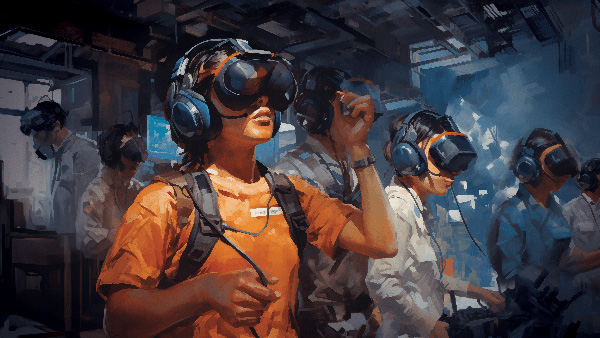National Safety Month, celebrated in June, serves as a reminder of workplace safety as the need for constant vigilance remains crucial.
Aviation manufacturing is facing challenges that demand immediate attention. The current demand in aircraft orders coupled with routine maintenance requirements exceeds the available pool of skilled workers. This shortage raises concerns about production timelines and the quality of manufactured parts. Worker shortages are just one piece of the puzzle. The skills required to work safely in a fast-paced environment filled with heavy machinery are also a critical challenge. Today’s complex environment is characterized by both worker shortages and recent equipment failures.
As 2 million jobs are anticipated to go unfilled in the aerospace manufacturing sector over the next decade, enterprises need to implement modern strategies to address the safety, quality, and efficiency challenges arising from high demand and a shortage of workers.
To address these concerns and elevate safety standards, innovative methods for safety procedures are crucial. In this context, Extended Reality (XR) training emerges as a modern strategy to enhance overall business practices. XR technology offers an immersive and interactive learning experience that goes beyond the limitations of traditional training methods.

Disruptive forces are at the forefront of a significant transformation in the aerospace industry. From the rise of eco-friendly technologies promoting fuel efficiency to the expanding use of composite materials, automation, and advanced communication systems, the sector is rapidly evolving. Unfortunately, these advancements are coupled with a growing talent gap caused by retirements and worker attrition. Similar to other manufacturing sectors, aerospace companies are struggling to attract talent and retain their existing workforce. This generates safety and efficiency challenges. In fact, recent statistics indicate a significant hurdle, with an estimated 18,000 serious injuries occurring annually in the manufacturing industry.
The landscape of employee development is undergoing a significant transformation. One of the most promising advancements to come in recent decades is immersive learning, a revolutionary approach powered by XR technology. XR technology includes various immersive experiences that place trainees in simulated real-world scenarios.
This modern technology allows workers to handle dangerous situations or unusual events in a safe virtual space. Training no longer needs costly interruptions from real-world scenarios. For instance, complex machinery operations can be practiced efficiently without interrupting production lines. Similarly, potential field hazards can be rehearsed without exposing workers to unnecessary risk. By providing a secure virtual environment, XR-powered learning empowers fieldworkers with the tools to navigate a broader range of real-world situations in zero-risk environments with greater confidence.
The benefits extend far beyond safety protocols. Immersive scenarios enable trainees to virtually navigate production layouts and practice using complex machinery in a controlled environment. This results in smoother real-world operations, fewer errors and improved workflow efficiency. Additionally, digital learning surpasses geographical constraints. Global employees can access training programs, promoting consistent skill development throughout the workforce. This standardization fosters improved collaboration and has the potential to greatly increase overall productivity.
Through adopting modern training methods like XR technology, manufacturing leaders can develop a workforce ready for the future, with the essential skills and confidence to succeed in a competitive setting. Training is more than just an activity; it is a strategic investment that empowers manufacturing teams to succeed in the long term by improving safety, quality, and efficiency.

About the Author:
Mike Peeler serves as the Senior Business Development Manager at Mass Virtual, a pioneering company specializing in cutting-edge training solutions using extended reality (XR). With over 25 years of service in the Air Force, Mike brings a wealth of operational insight, unparalleled experience, and strategic vision to propel Mass Virtual’s growth and its suite of innovative products
Scott Ellyson, CEO of East West Manufacturing, brings decades of global manufacturing and supply chain leadership to the conversation. In this episode, he shares practical insights on scaling operations, navigating complexity, and building resilient manufacturing networks in an increasingly connected world.